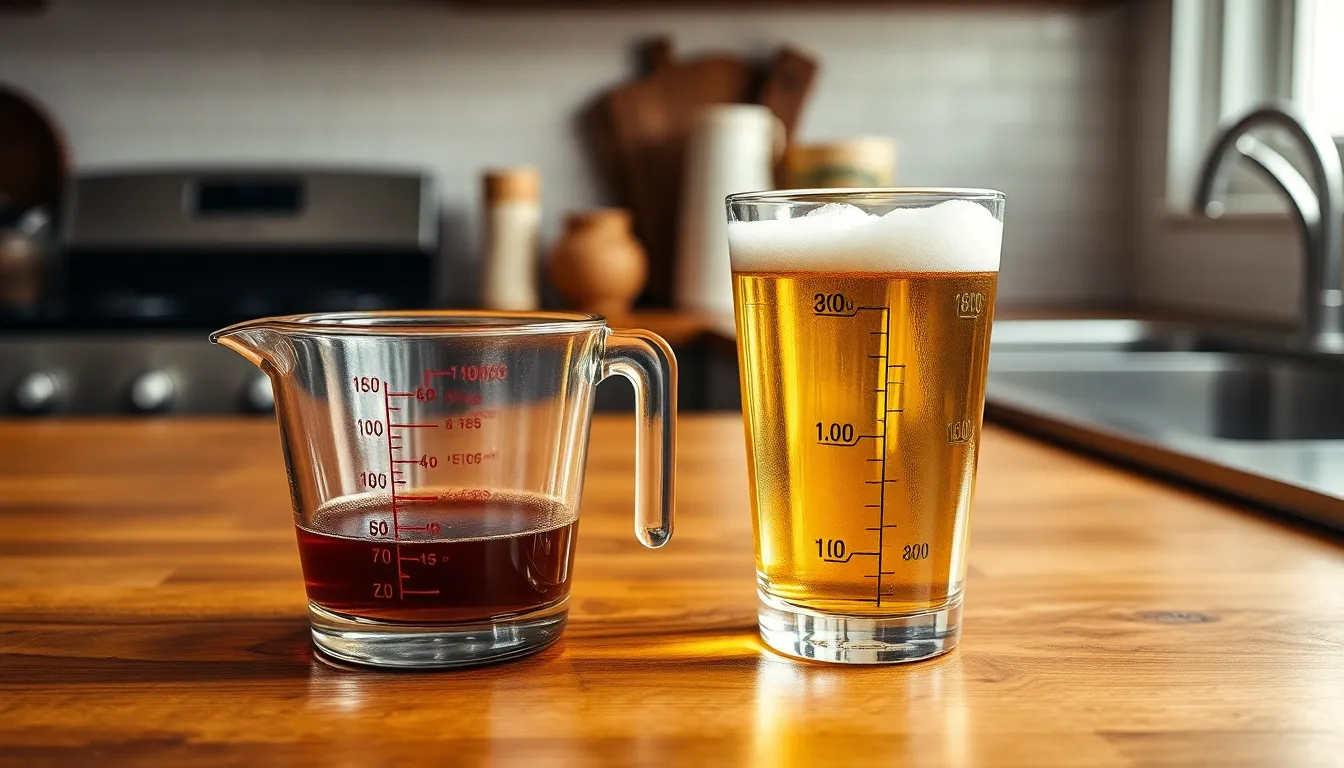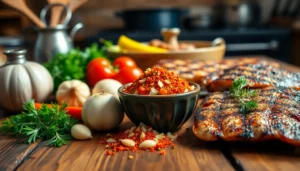Table of Contents
ToggleEver found yourself in a heated debate over how much a pint really is in cups? You’re not alone. Many people have faced this conundrum while trying to impress friends with their drink-measuring skills or while following a recipe that calls for precise measurements. It’s a classic case of “I know what a pint is, but how many cups does that translate to?”
Understanding Measurements
Conversions between pints and cups often create confusion. One pint is equivalent to 2 cups. This direct relationship simplifies recipes, especially when accuracy is crucial.
Measuring liquids in pints or cups depends on preference. Cooks may prefer cups for smaller measurements, while pints are common in larger quantities. Many recipes specify pints for beverages, while cups are more typical for baking and cooking.
Understanding the metric system can also help. A pint contains roughly 473 milliliters. Knowing this equivalency aids in adjusting measurements when necessary.
Visual aids can clarify these concepts. A standard measuring cup clearly shows how much liquid corresponds to a pint. Utilizing these tools ensures proper measurement and consistent results.
When working with recipes, consider the context. Recipes originating from various regions might use different measurement systems. Familiarity with both systems provides flexibility while cooking.
Accuracy in measurements contributes to overall success in the kitchen. He or she who masters these conversions can confidently follow any recipe. With 2 cups per pint, translating measurements becomes a straightforward task.
Converting Pints to Cups

Understanding how to convert pints to cups ensures accurate measurements for recipes. A simple conversion can make cooking and baking more manageable.
The Conversion Formula
One pint equals 2 cups. This straightforward formula establishes a clear relationship between the two units. For every pint used in a recipe, doubling the amount provides the equivalent cup measurement. Cooks can quickly visualize this conversion, simplifying their preparation process. Utilizing this formula helps prevent measurement blunders and ensures consistent results in any dish.
Examples of Conversion
When faced with a recipe calling for 1 pint of milk, it translates to 2 cups. Similarly, if a soup recipe requires 3 pints, that equals 6 cups. Numbers clarify the conversions. Cooks wanting to make smaller quantities can easily adapt, halving the measurements as needed. If a chef uses 0.5 pints, they simply measure out 1 cup. Such real-world examples reinforce the importance of understanding pints and cups for successful cooking.
Why Know This Conversion?
Understanding the conversion from pints to cups plays a vital role in cooking and baking practices. It helps make certain the measurements used in recipes lead to successful outcomes.
Practical Applications
Many recipes specify ingredients in either pints or cups. Knowing the relationship between these units allows cooks to adapt recipes easily. For example, transforming 2 pints of strawberries into 4 cups can streamline preparation. This knowledge assists in meal planning and scaling recipes, catering to larger gatherings. Being able to convert makes it simpler to follow family traditions or try new dishes.
Importance in Cooking and Baking
Precise measurements are key in cooking and baking. A single incorrect measurement can alter the final dish. Recipes relying on exactly 1 pint of broth need a clear understanding that this equals 2 cups. Mastering these conversions ensures that bakers achieve consistent results. Familiarity with the pint-to-cup conversion reduces errors when adapting international recipes, which may differ in measurement systems. Successful execution lies in accurate conversions, enabling home cooks to follow any recipe with confidence.
Common Misconceptions
Many people mistakenly believe that a pint and a cup are interchangeable measurements. Confusion often arises due to variations in measuring systems across different regions. The key to clear understanding is recognizing that one pint equals exactly 2 cups. This consistency helps eliminate uncertainty when following recipes.
Another misconception involves the idea that all pints measure the same regardless of the substance. Liquid measurements typically differ from dry measurements in terms of density and volume, affecting the final amount. Cooking requires careful consideration of these nuances to ensure accurate results.
Additionally, it’s common for cooks to think that using different measurement units won’t impact the final dish. However, even slight errors in measurements can lead to significant changes in taste and texture. Recipes that specify pints or cups highlight these differences, making exact conversions vital for successful outcomes.
Some people assume that knowing a single conversion suffices for all cooking situations. Grasping that a pint equals 473 milliliters extends the utility of this knowledge to various contexts, especially in international recipes that might present different units.
Finally, beginners often underestimate the importance of using accurate measuring tools. Standard measuring cups, for instance, promote consistent measurements, enhancing cooking precision. Addressing these misconceptions leads to greater confidence in the kitchen, allowing cooks to achieve culinary success without fear of measurement errors.
Understanding the conversion between pints and cups is essential for anyone who enjoys cooking or baking. With one pint equaling two cups, this knowledge simplifies recipe adjustments and ensures accuracy in measurements. By mastering these conversions cooks can confidently tackle recipes from various regions without the fear of measurement errors.
Utilizing standard measuring tools further enhances precision and consistency in the kitchen. As cooks become familiar with these conversions they’ll find that their culinary adventures become more enjoyable and successful. Embracing this essential skill not only elevates cooking but also fosters a deeper appreciation for the art of food preparation.




